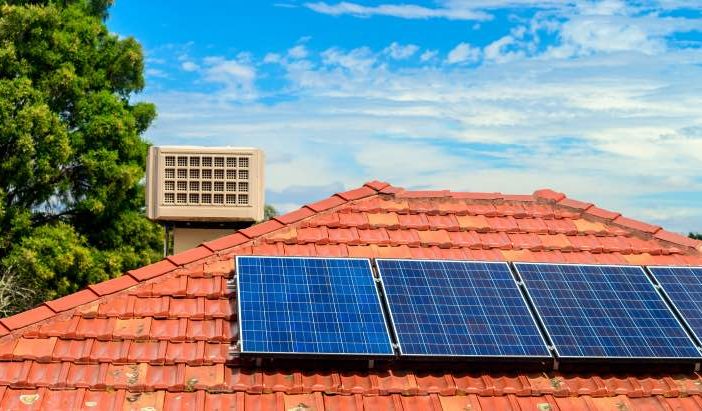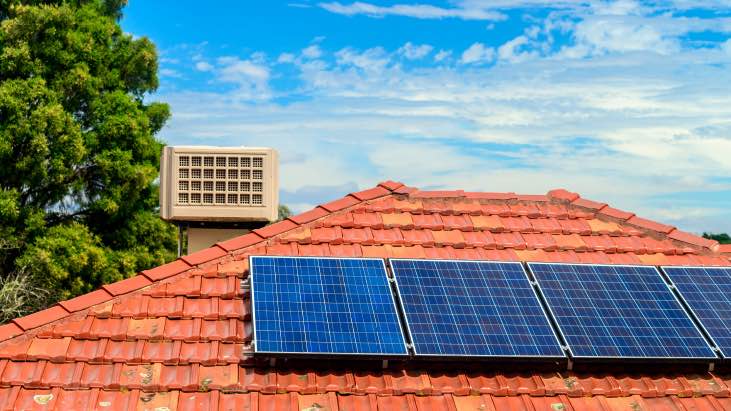
The Australian Energy Market Commission has this week delivered its long-awaited final determination on controversial electricity market rule changes that will – among other things – impose a tariff for households and businesses to export their excess solar power into the grid.
The rule changes, proposed by SA Power Networks, St Vincent de Paul, Total Environment Centre and Australian Council of Social Service, have been the subject of fierce and deeply divided debate.
On one side, it is argued that the rule changes will bring “more sun for everyone” (TEC/ACOSS) and set out a fair and balanced pathway to a future grid that will need to accommodate a lot more distributed renewable energy.
On the other, they are a tax on the sun and an unfair burden on households for sharing their clean solar energy (Solar Citizens).
Read RenewEconomy’s report on the determination, here.
But what does the AEMC’s final determination actually mean for consumers? How will it change the game for existing solar households? And what will it mean for return on investment for those considering installing rooftop PV?
Here are 6 key takeaways from the AEMC’s decision:
1. It’s complicated!
There are 178 pages to the AEMC’s final determination and there is a lot to unpack.
Essentially, the final rules make clear that export services are part of the core services to be provided by distribution network service providers, or DNSPs.
“By removing references in the NER that are specific to the direction of energy, the regulatory framework will give clear guidance that ‘distribution services’ relate not only to sending energy to customers, but also to customers exporting the energy they generate,” the AEMC says.
“For customers, this gives clarity around their rights to access export services. For DNSPs, this provides clarity around what they are expected to provide in delivering those services.”
This means networks have to let solar homes export to the grid (well, they don’t absolutely have to, but we’ll get to that later), but can also claim costs to make that happen in a way that doesn’t compromise the smooth running of the grid. These costs will make their way to solar customers via their electricity retailers.
How this part will be worked out – and how much it will cost to export solar – is where things become a bit less clear.
As Bruce Mountain – a strong critic of the rule changes – said on Thursday, the ball is now in the Australian Energy Regulator’s court, and will require a good deal of “paper-chasing.”
That’s because all new network plans will have to be scrutinised and signed off by the AER as being in consumers’ interest. Networks will also have to consult widely and test and trial the options they put forward.
But for its part, AER has said it is up to the task:
“For the household rooftop solar investors out there, and network companies, we want you to know that we will work with you to develop a set of guidelines that encourage network investment that supports the national grid, the environment, and is good news for retail energy bills,” AER chair Clare Savage said on Wednesday.
Once the AER has set its rules – in September 2021 it will begin a consultation process on developing a guideline for network pricing structures and how networks should develop their proposals – the option to charge solar customers for their exports to the grid will then be in the hands of the DNSPs (and, to an extent, retailers).
What will happen then is anyone’s guess. It will likely vary from DNSP to DNSP and from state to state – Victorian and Queensland energy ministers have both spoken out in opposition to charging solar households in their states.
2. We don’t know what the tariffs will look like or the impact on solar savings
Determining what impact the tariff might have on solar customers will be a case-by-case affair, depending on factors like a system’s size, relative feed-in tariffs, and the export tariff approach taken by the relative network.
As a rough guide, the AEMC has said that average sized systems would face between $10-100 annual charge, or 2c/kWh.
According to the AEMC, its modelling shows that “even under a worst-case cost scenario, solar owners choosing paid plans would still earn at least 90% of what they do now.”
This, the AEMC adds, is assuming no change in consumer behaviour in response to export charges. “Where consumers can increase their self-consumption of solar PV generated, the impact of export charges can be offset by a corresponding increase in the benefit from self-consumption,” it says.
Bruce Mountain, who is director of the Victoria Energy Policy Centre, has been highly critical of this modelling, however, describing it here as “eternally inconsistent.” By his reckoning, the tariff would look more like 4.8c/kWh.
But as Mountain also notes, the AEMC has stressed that it is not setting the solar charge – it will leave this to the distributors to determine following “negotiation” with its customers. So we wait and watch.
3. The rules recognise customers should have a right to export, but zero-export limits are not ruled out
One of the positive takes on the AEMC determination is that it removes the DNSP’s ability to put blanket bans on customers sending solar energy back to the grid.
As One Step has reported, Australia’s booming rooftop solar market has seen an increasing number of households come up against strict limits to the amount of energy they are allowed to export to the grid, with many finding that they cannot export their solar at all.
Under the final rules, however, a DNSP will not be able to offer a static zero export limit to a customer who is seeking to connect a new small-scale rooftop solar system to the network… except, it will.
That is, zero export limits are out, “unless … requested by the customer, or an exception listed in the AER’s connection charge guidelines applies.”
And it explains: “The Commission considers it is inappropriate to introduce a complete prohibition on DNSPs offering static zero limits as there may be circumstances where it is efficient or necessary for DNSPs to apply them.”
4. It will not be mandatory to pay a solar export tariff, but if you don’t, expect tighter export limits
As the AEMC explains on its Fact Sheet here, networks will be allowed to offer paid export plans, but they will also need to offer a free basic export service, with a blanket limit on the amount a household can send to the grid based on the limitations of the local network.
Currently, many solar households – and all of them in South Australia – are already limited to 5kW in exports. But under the new tariff structure, those who do not pay to export can expect to pay in another way, with a potentially much tighter limit.
For example, as Solar Citizens points out in its scathing response to the AEMC determination this week, in South Australia, customers opting not to pay an export tariff could see their export capacity slashed to less than a third of what it is now.
5. There is plenty of time before the new rules will fully kick in, and existing systems are off-limits for just under four years
While new rules take effect for DNSPs on July 01 2022, for customers – as the TEC has pointed out – they will be phased in over a decade, allowing some time for existing rooftop solar systems to continue to pay for themselves (a tweak to the final determination that the TEC and ACOSS campaigned for).
This lag comes courtesy of a provision that prohibits DNSPs from putting existing solar customers onto export tariffs until July 2025.
Further to that, they are also required to have a basic export level for export tariffs for the coming two regulatory control periods – a period of 10 years – and are not allowed to charge retail customers for export services up to that basic export level.
6. Whatever way you look at it, it’s time to get smarter about home solar
Whether you agree with the introduction of a solar export tariff, or not, it’s safe to say that the days of generous feed-in tariffs are long gone and it is time for solar households to start looking at different ways to squeeze value from their investments.
This might mean adding battery storage, for some, but for most solar households it will be about using more of what they generate, as well as functioning as a part of the broader grid and exporting power when it is needed, rather than when it is already in abundance.
As it happens, these new rules are – at least in theory – trying to achieve that goal.
“These new measures to drive smart solar are fundamental to enabling a modern electricity grid that delivers out to 2030 and beyond,” said AEMC Chair Anna Collyer.
“By carving a path for smart solar, batteries and electric vehicles, more solar can be used, we will keep costs down for all consumers and protect the value of household solar investments already made.
“We don’t want to see solar going to waste. That costs everyone more because less cheap renewable energy gets into the system.”
Mark Byrne from TEC said on Wednesday he was confident that most solar owners could be better off under the new rules, which would reward the value to networks of energy exported to the grid at times of peak demand.
“This is especially true if you can run more appliances during the day, face solar panels east or west instead of north; install a home battery; or charge an EV when the sun is shining,” he said.
“Now that the formal process has been finalised, we look forward to working with other stakeholders through the next network revenue determination process, especially to design export tariffs that can benefit everyone.”

Sophie is editor of One Step Off The Grid and editor of its sister site, Renew Economy. Sophie has been writing about clean energy for more than a decade.

